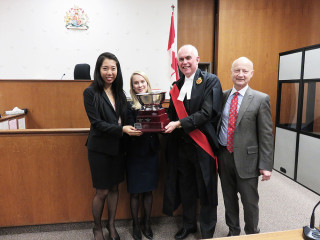Full Decision
In Tomec v. Economical Mutual Insurance Company, a decision of the Ontario Court of Appeal, the issue was whether or not discoverability applies to the two year limitation period under s. 281.1(1) of the Insurance Act and s. 51(1) of the Statutory Accident Benefits Schedule (SABS).
Both provisions state, using slightly different words, that a mediation, evaluation, court proceeding or arbitration regarding a benefit shall be commenced within two years after the insurer’s refusal to pay.
The insured was a pedestrian struck by a motor vehicle in September 2008. She applied for and received attendant care and housekeeping benefits. Both benefits were available for only 104 weeks unless the insured was declared CAT.
In August 2010 Economical, the AB insurer, advised Tomec that her housekeeping and attendant care benefits would come to an end in September 2010, 104 weeks after her accident. It was common ground that the insured was not CAT at that time.
The insured’s condition worsened over time. In May 2015, the Tomec’s doctor opined that she met the CAT definition. Economical acknowledged that she was CAT. Economical, however, took the position that she was out of time to claim for housekeeping and attendant care benefits, as it had been more than two years since the denial in September 2010. The LAT and the Divisional Court determined that discoverability did not apply and therefore the insured could not claim further housekeeping or attendance care benefits. The Court of Appeal determined that the standard of review was one of reasonableness, as it was a decision involving an administrative decision-maker interpreting a statute closely related to its function.
The Court of Appeal ruled that discoverability applied to the limitation period, relying upon the Supreme Court decision of Pioneer Corporation v. Godfrey, 2019 SCC 42 – released after the Divisional Court ruling. Pioneer held that where the running of a limitation period is contingent on the formation of a cause of action or on the happening of an event dependent on a plaintiff’s knowledge of his or her injury, the discoverability principle applies. Pioneer further held that substance must prevail over form when interpreting the wording of a limitation period.
In this case, the running of the limitation period was dependent on the formation of a cause of action, namely the refusal to pay a benefit which then allows the insured to make a claim for mediation or evaluation, etc. This is entirely different from the two year limitation period that applies to estates. That limitation period begins to run immediately after a person dies, independent of any cause of action.
In support of its ruling, the court relied upon Arts (Litigation Guardian of) v. State Farm Insurance Co., 2008 CanLII 25055 (ON SC), which held that (1) the SABS is remedial and consumer protection legislation with the goal of reducing the economic hardship of MVA victims; and (2) the CAT definition is intended to be remedial and inclusive to ensure victims with the greatest health needs have access to greater medical benefits. A hard limitation period was at odds with the consumer protection purpose of the SABS. It was also contrary to the goal of maximizing benefits for the small class of victims who suffer from long lasting, serious injuries.
In perhaps the most persuasive reasoning, the court concluded that holding otherwise would lead to absurdity. A hard limitation period would bar the insured from claiming enhanced benefits even before she was eligible for those benefits. Further, if she had not claimed any benefits at all before being declared CAT, her claim would not be barred. How does that make sense?
The LAT decision was unreasonable because there was only one reasonable interpretation and the Tribunal adopted a different interpretation. The orders of the LAT and the Divisional Court were set aside.















